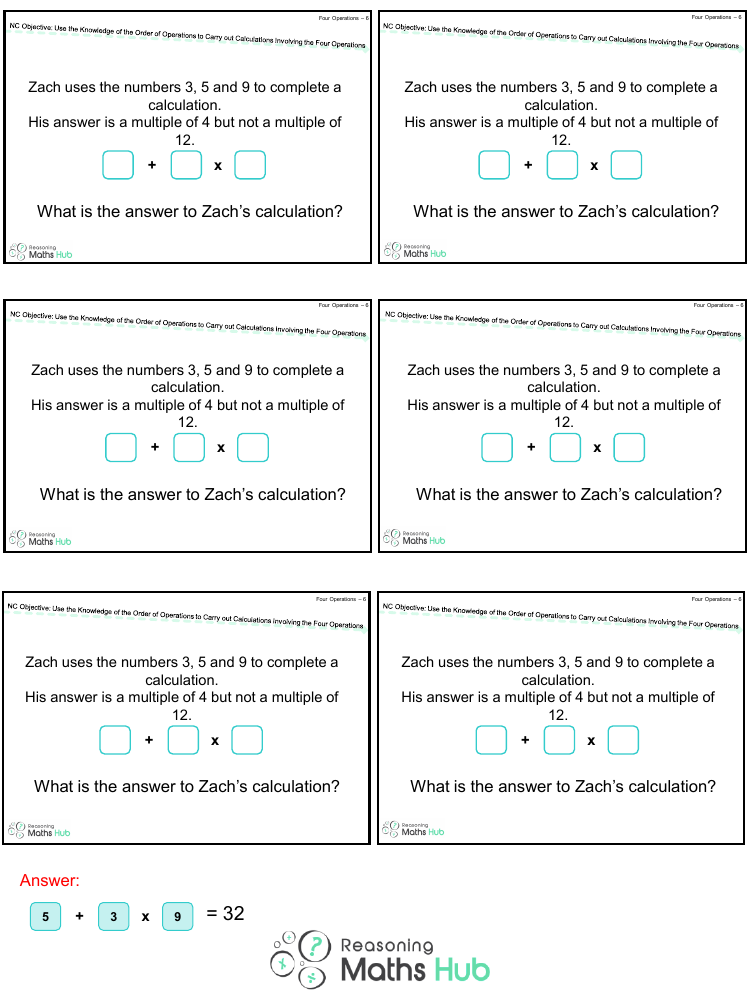Use Their Knowledge of the Order of Operations to Carry Out Calculations Involving the Four Operations 2 - Reasoning

Maths Resource Description
Zach's task involves using the three numbers 3, 5, and 9 in a calculation that results in a multiple of 4 but not a multiple of 12. The operation symbols provided are addition (+) and multiplication (x). To solve this, we need to apply the order of operations, often remembered by the acronym PEMDAS (Parentheses, Exponents, Multiplication and Division, Addition and Subtraction), ensuring that multiplication is done before addition. Zach's calculation is structured as 5 plus the product of 3 and 9. When the order of operations is followed, we first calculate the multiplication: 3 times 9 equals 27. Then we add 5 to the product, resulting in 27 plus 5, which equals 32. The number 32 is indeed a multiple of 4 but not a multiple of 12, satisfying the conditions of Zach's calculation.
The answer to Zach's calculation is therefore 32. This exercise not only tests the student's ability to perform basic arithmetic operations but also reinforces the importance of the order of operations in ensuring that calculations are carried out correctly. Understanding that multiplication takes precedence over addition is crucial, and this example clearly demonstrates how the correct application of this rule leads to the desired outcome. It is also a good practice in recognizing multiples and understanding the properties of numbers, as students are required to find a result that fits specific multiple criteria.